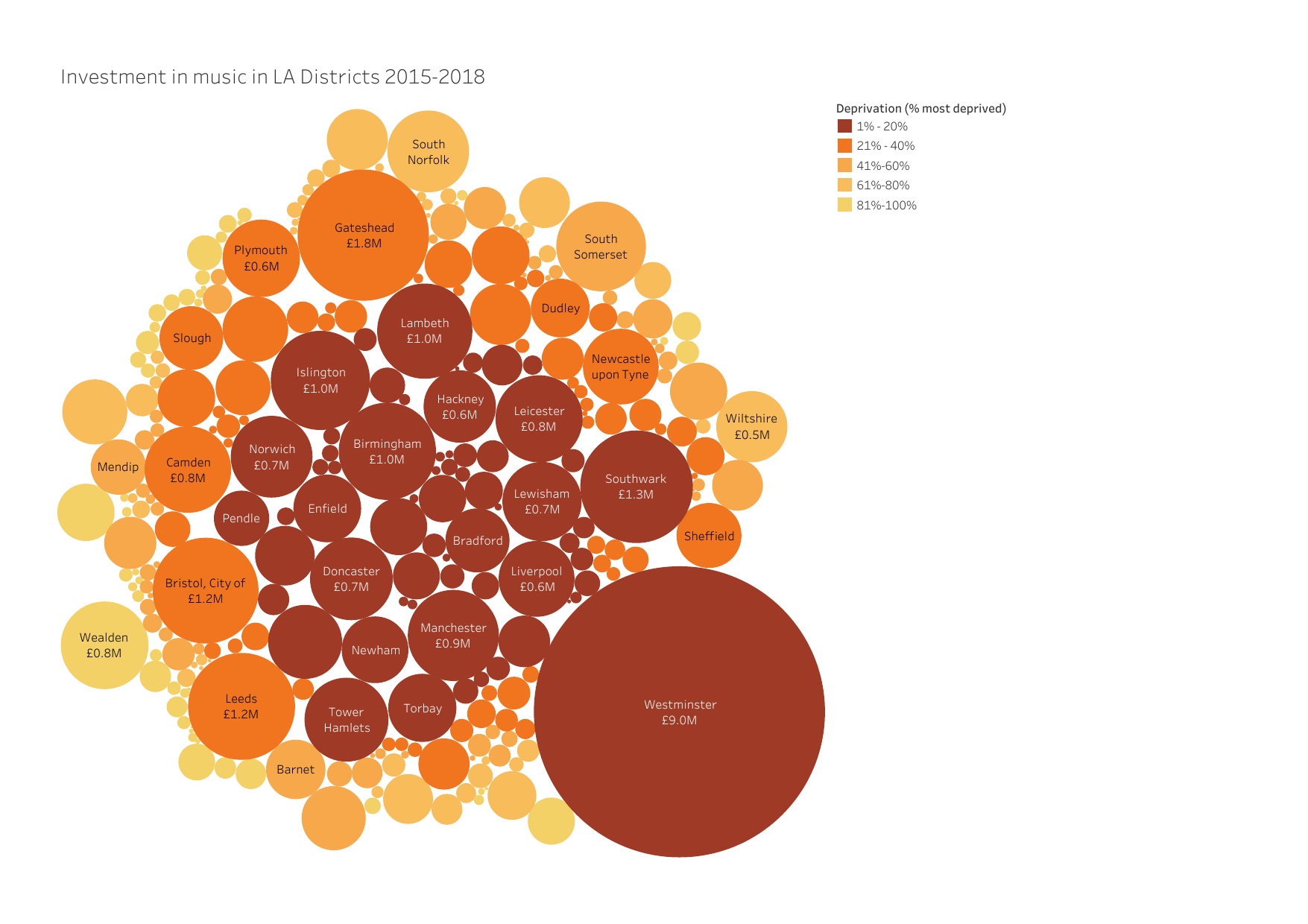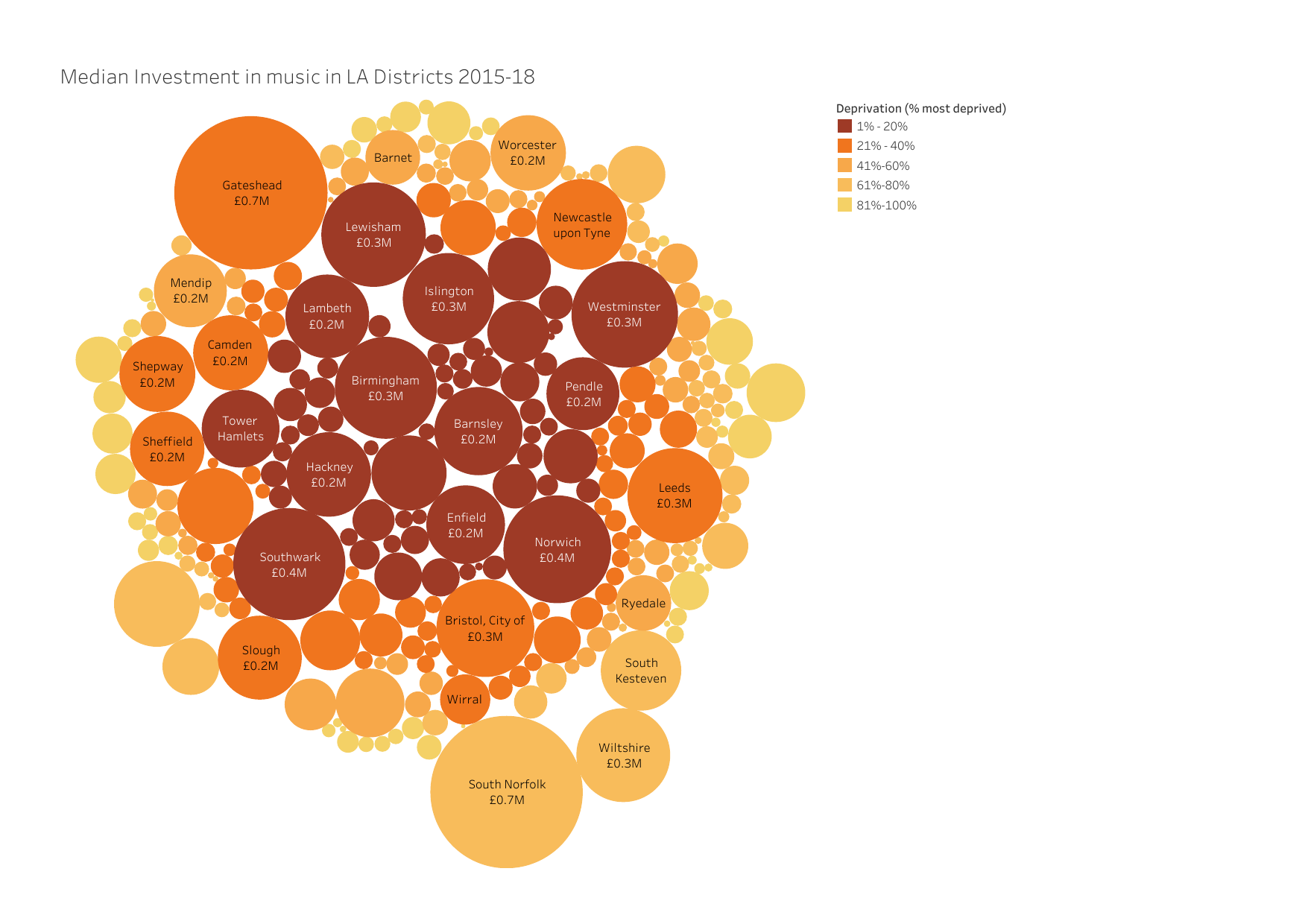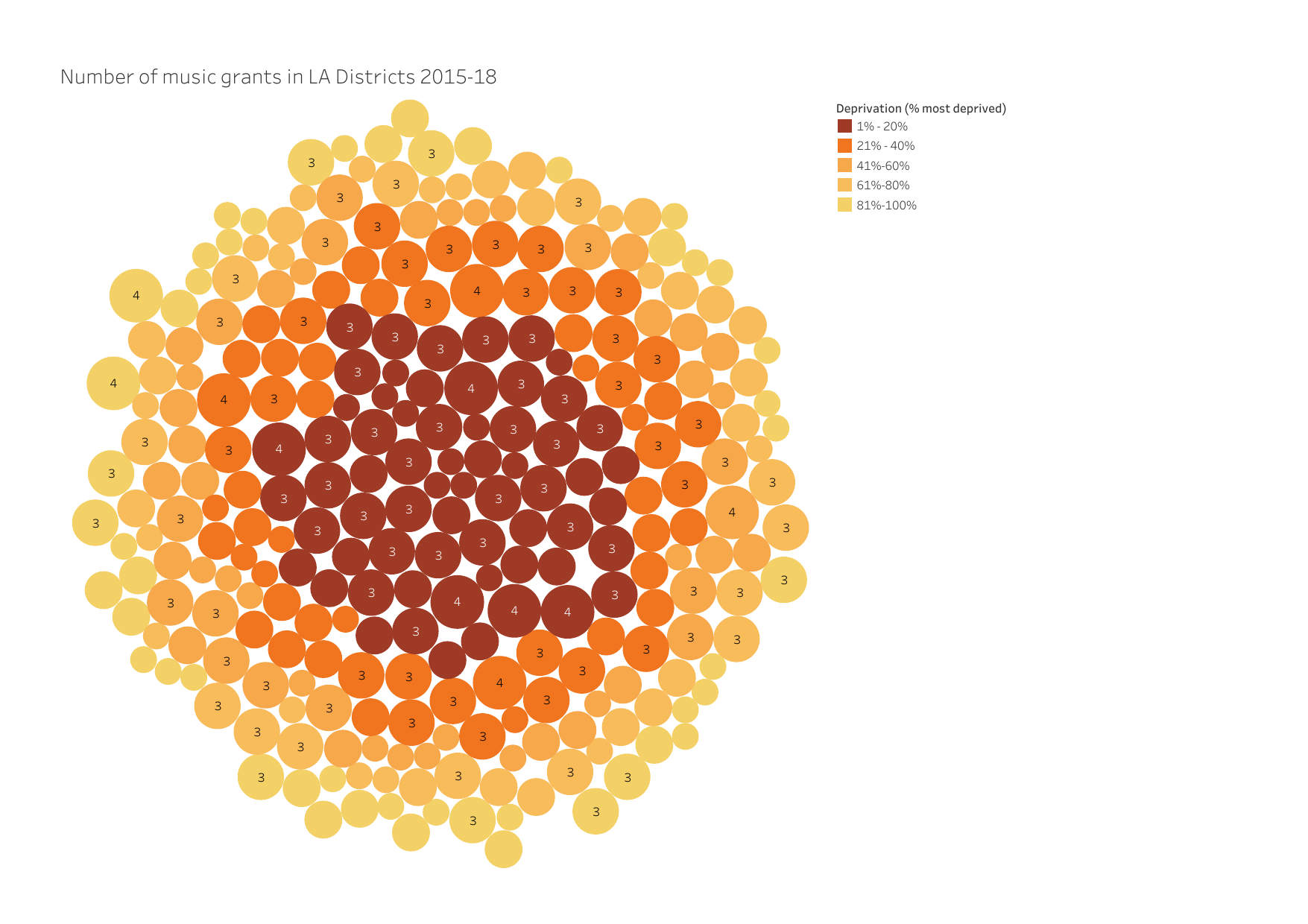Investment in music in deprived areas of England
23 August 2018
In this blog series, participants in the 360Giving Data Journey share their learning and experience.

Nick Wilsdon
Nick Wilsdon is the Research and Evaluation Manager at Youth Music and chair of London Funders Research & Evaluation group. Youth Music is a national charity investing in music-making projects that help children and young people develop personally and socially as well as musically.
I joined the Data Journey to challenge myself to think about data in new ways, and because I believe that open data has great potential to enhance grantmakers’ decision-making processes.
Youth Music is an evidence based funder, and our grantmaking processes are informed by a range of indicators such as the Indices of Multiple Deprivation, existing cultural investment and engagement, as well as our own regional knowledge gathered on the ground.
A significant part of Youth Music’s grantmaking process is based on local and/or regional data of existing provision. Expanding the information we draw on at a local level could support our funding decisions, and help us identify like-minded organisations working with young people facing barriers to making music.
Here’s what Nick found
My (provisional) question was:
“Since 2015, what is the total amount of funding found on GrantNav that has been awarded for music-making activities delivered by organisations located in the 20% most deprived local authorities in England, and what proportion of these recipients are statutory bodies?”
I started by looking at music funding found in GrantNav since 2015. The latest Indices of Multiple Deprivation was published in 2015, so it made sense to align my search with this timeframe. Through my initial analysis, it became apparent that there was a significant investment in Westminster which needed further investigation.

Investment in music in Local Authority Districts 2015-2018
Analysing the same dataset from a different angle helped elucidate the funding picture – the median investment in Westminster was substantially lower. Visualising this data makes it clear that in spite of an over investment of £9m in Westminster in the 2015-18 period, the median investment was only £0.3m – so either there were lots of small grants allocated to that local authority, or a few large grants bringing the overall investment up.

Median investment in music in Local Authority Districts 2015-2018
Contrasting this data with a visualisation of the number of grants awarded in the same period suggests that no local authority district was receiving a considerably higher number of grants than any other during this period of time. Between 2015-18, only 3 grants were awarded in Westminster, notably more than those areas which received zero grants, but less than the maximum number of grants awarded in any one local authority, which was 4.

Number of music grants by Local Authority Districts 2015-2018
Looking at the raw data revealed that there was a sizeable grant awarded to an organisation based in Westminster to deliver a nationwide programme of work. This highlighted one of the limitations of working with geographical data from funders – in many instances this is based on the recipient organisation location and not the beneficiary location. With this caveat in mind, I did however find it useful to visualise how investment in the 20% most deprived local authority districts was changing over time:

Music investment in most deprived Local Authority Districts 2015-18
It can be seen above that the investment recorded in Westminster in 2016 provides a peak that is worthy of attention. Although duration of the sample taken is not long enough to draw any robust conclusions, it is also interesting to observe that investment in the least deprived 20% appears to be declining.
In summary
I really enjoyed having the space to think about data in this way, and it was extremely beneficial to learn from watching others work with similar datasets. It is promising to see so much rich data published in the 360Giving format already, and although there is more work to do, this preliminary analysis has helped deepen my understanding of the wider ecology of funders supporting music-related activity.
